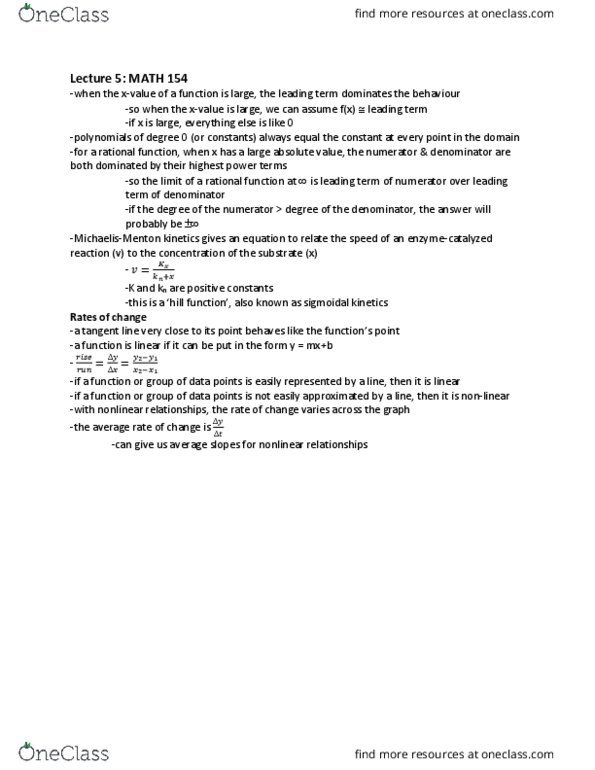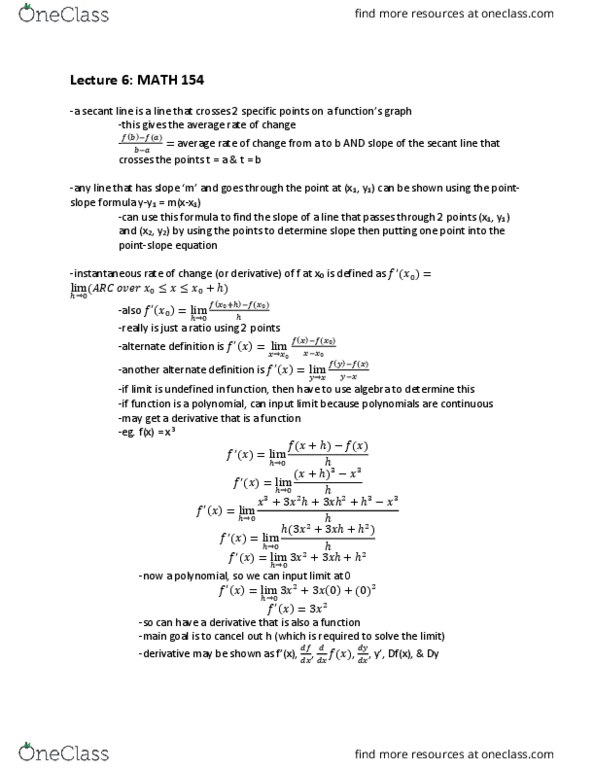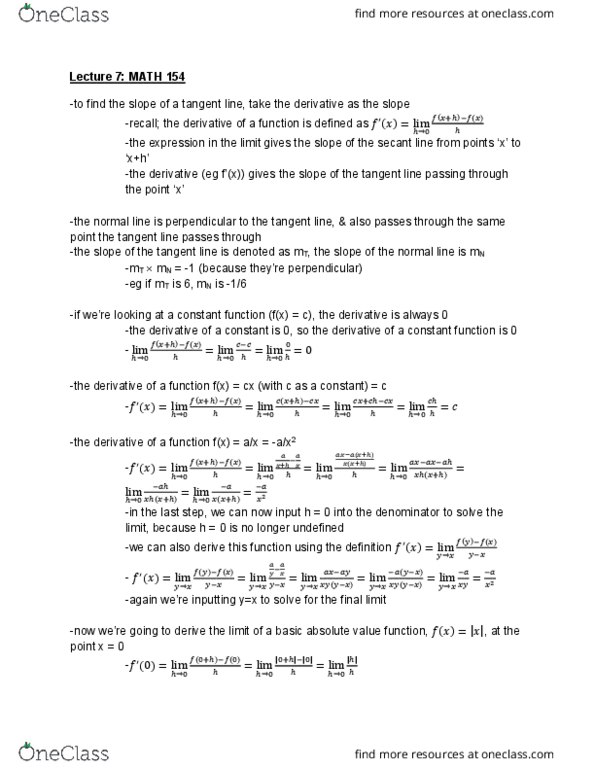MATH 154 Lecture 7: Lecture 6: Limits & Instantaneous Rates of Change/Derivatives
MATH 154 verified notes
7/38View all
Document Summary
A se(cid:272)a(cid:374)t li(cid:374)e is a li(cid:374)e that (cid:272)rosses 2 spe(cid:272)ifi(cid:272) poi(cid:374)ts o(cid:374) a fu(cid:374)(cid:272)tio(cid:374)(cid:859)s graph. This gives the average rate of change (cid:3029) (cid:3028) = average rate of change from a to b and slope of the secant line that. (cid:4666)(cid:3029)(cid:4667) (cid:4666)(cid:3028)(cid:4667) crosses the points t = a & t = b. A(cid:374)(cid:455) li(cid:374)e that has slope (cid:858)(cid:373)(cid:859) a(cid:374)d goes through the poi(cid:374)t at (cid:894)(cid:454)1, y1) can be shown using the point- slope formula y-y1 = m(x-x1) Can use this formula to find the slope of a line that passes through 2 points (x1, y1) and (x2, y2) by using the points to determine slope then putting one point into the point-slope equation. Instantaneous rate of change (or derivative) of f at x0 is defined as (cid:1858) (cid:4666)0(cid:4667)= lim 0(cid:4666) (cid:1857) 0 0+ (cid:4667) If limit is undefined in function, then have to use algebra to determine this. If function is a polynomial, can input limit because polynomials are continuous.





